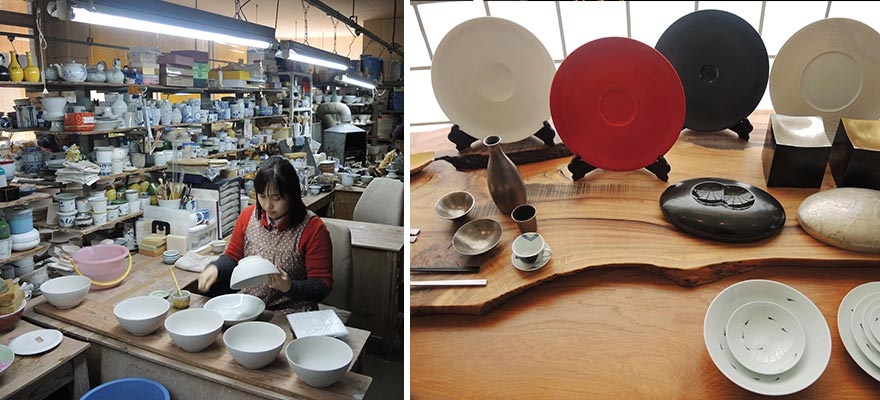Japanese Porcelain Prized by Chefs Overseas
Arita porcelain has its origins in the town of Arita in Kyushu, in the west of Japan. With a 400-year tradition, Arita is the oldest among Japan's various porcelain-making regions, and Arita porcelain exported to Europe in the 17th century had a strong influence on what would become Germany's Meissen porcelain brand. Even today, famous European art galleries and the Palace of Versailles attract attention with exhibits of the vibrant Arita porcelain of the period.
The five ceramic artisans who have inherited this legacy of Arita porcelain now hope to create modern dinnerware that will be just as beloved by chefs around the world. Hoping to once again broaden the appeal of Arita porcelain overseas, they've poured their efforts into the Product ARITA project.
"I want to forge a new age of Arita porcelain and create works that will be around 100 years from now," enthuses Shinji Terauchi, one of the project members and proprietor of Riso Ceramics. The recent global boom in Japanese cuisine has proven favorable for the project, and the export of Arita porcelain has already expanded, beginning first in China. Arita porcelain is now favored among Europe's leading restaurants as well.
The dinnerware offered by Product ARITA lends new charm to even the refined epicurean cultures of France and Spain. Arita porcelain's simple yet bold designs form a brilliant showcase for the infinite creativity of European chefs—artists in the realm of cuisine. "Previously, it was customary for French cuisine to be served in the very center of the plate," Terauchi says. "But now chefs often use the entire plate for serving, making the most of the white space and using flat plates similar to Japanese dinnerware. Chefs paint pictures with their cuisine, using the plate as a canvas. This method of self-expression through the arrangement of food on tableware is akin to the food culture we see in Japan—where we have the idea that we should enjoy not just the meal but the vessel as well. It might even be said that the current trend toward dishes that use seasonal ingredients, and of highlighting the quality of the ingredients themselves, also takes a cue from Japanese cuisine. The chefs of the world are now looking for canvases on which they can beautifully present their own creations. Perhaps the next stage in that process will be to demand frames that show off their works to greater effect."
As he creates his porcelain, Terauchi says it's important for him to have conversations with his chef clients, and see them in person, to discuss the sorts of dinnerware they need. His approach of keeping his customers in mind while meeting the finest details of their needs may explain why the world's top chefs are so satisfied with his work.
As it elevates chefs at the top of their craft to even further heights, the future promises a new age for Arita porcelain. As they venture into markets overseas, the porcelain-making artisans embody the very essence of Japanese craftsmanship. Thanks to their efforts, this traditional craft will surely live on for another 100 years.




